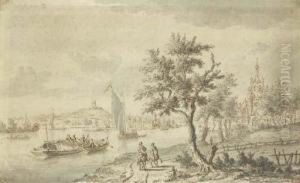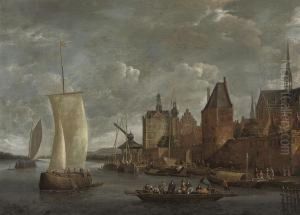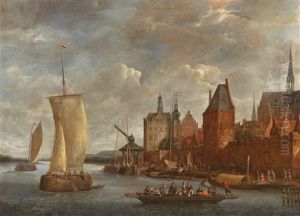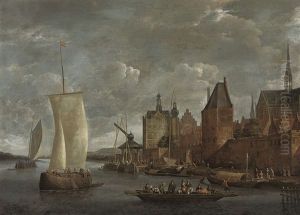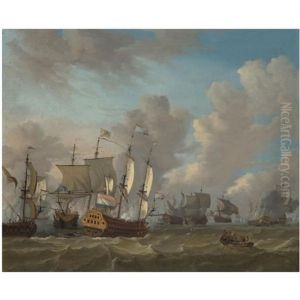Johannes Storck Paintings
Johannes Storck, also known as Johann Sturckenburch, was a Dutch marine painter born in 1659 in Haarlem, Netherlands. Storck belonged to a family of artists and was the son of the landscape painter Jan Jansz Sturck, who was also known as Sturckenburch, indicating the family's original place of origin. This artistic environment shaped Johannes' early life and career, guiding him towards becoming a notable figure in the Dutch Golden Age of painting, a period renowned for its incredible flourishing of arts in the 17th century.
Johannes Storck's work primarily focused on marine subjects, depicting ships, naval battles, and serene harbor scenes with remarkable detail and accuracy. His paintings are characterized by their meticulous attention to the elements of light, atmosphere, and the intricate rigging of ships, capturing the bustling activity and the expansive calm of the sea with equal skill. Storck's ability to render the sea in all its forms made him a prominent name among marine painters of his time.
Despite his talents, Johannes Storck was not as well known as some of his contemporaries like Willem van de Velde the Younger, but his works were highly valued among art connoisseurs and collectors for their quality and the insight they provided into the maritime life of the era. Throughout his career, Storck exhibited a remarkable range in his seascapes, from dramatic shipwrecks and naval engagements to peaceful coastal scenes and busy port views, which showcased the economic prosperity and naval power of the Dutch Republic.
Johannes Storck's contributions to the field of marine painting were part of the larger Dutch tradition of landscape and seascape art, which sought to capture the unique relationship between the Dutch people and their aquatic environment. His works remain significant for their artistic merit and as historical documents, offering insight into the maritime history and the aesthetic values of his time. Storck passed away in 1703 in Amsterdam, leaving behind a legacy that, though not as widely recognized as some of his peers, is deeply appreciated by aficionados of Dutch Golden Age painting.
